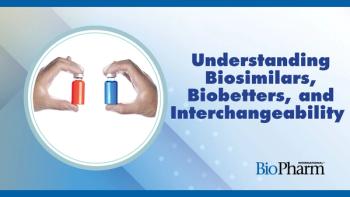
EMA Recommends New ALS Treatment
The agency has recommended granting marketing authorization to ALS treatment, Qalsody (tofersen), for adults who have a mutation in the superoxide dismutase 1 (SOD1) gene.
The European Medicines Agency (EMA) announced on Feb. 23, 2024 that the Committee for Medicinal Products for Human Use (CHMP) has recommended granting market authorization to Qalsody (tofersen). The CHMP opinion will be sent to the European Commission for adoption.
Qalsody is indicated for the treatment of adults with amyotrophic lateral sclerosis (ALS) who have a mutation in the superoxide dismutase 1 (SOD1) gene. It will join the only other treatment for ALS in the European Union, riluzole.
According to EMA, Qalsody, an antisense oligonucleotide that binds to the messenger RNA of the SOD1 gene, reduces the production of SOD1 protein, which leads to an improvement of ALS symptoms. CHMP’s opinion was based on the way the drug works, effects observed in a SOD1 animal model, biomarkers, and clinical data.
The clinical data were obtained from a 28-week, randomized, double-blind, placebo-controlled study. The study included 108 patients from ages 23 to 78 with ALS and a SOD1 gene mutation who were randomly assigned in a 2:1 ratio to receive treatment through a spinal injection with either Qalsody or a placebo. There was an approximately 60% reduction in plasma neurofilament light chain (NfL) concentrations in the group that received Qalsody compared to those who got the placebo, which suggested a reduction in neuronal injury. A numerical improvement was also noted in the physical abilities of the patients who received the drug compared to the placebo.
The marketing authorization applicant for Qalsody has been asked to submit post-authorization data “to further characterize the long-term efficacy and safety of Qalsody, on the basis of an open-label long-term extension study, collaboration with two disease registries, and an observational registry-based study. In addition, it will be investigated if the use of tofersen can delay or even prevent emergence of clinically manifested ALS in presymptomatic SOD1‑ALS patients,” EMA stated in a press release.
ALS patients have a mean survival time of two to five years, according to EMA. ALS causes gradual deterioration of the nerve cells in the brain and spinal cord that control voluntary movement. This deterioration causes a loss of muscle function and paralysis of voluntary muscles, including respiratory failure.
Source:
Newsletter
Stay at the forefront of biopharmaceutical innovation—subscribe to BioPharm International for expert insights on drug development, manufacturing, compliance, and more.




